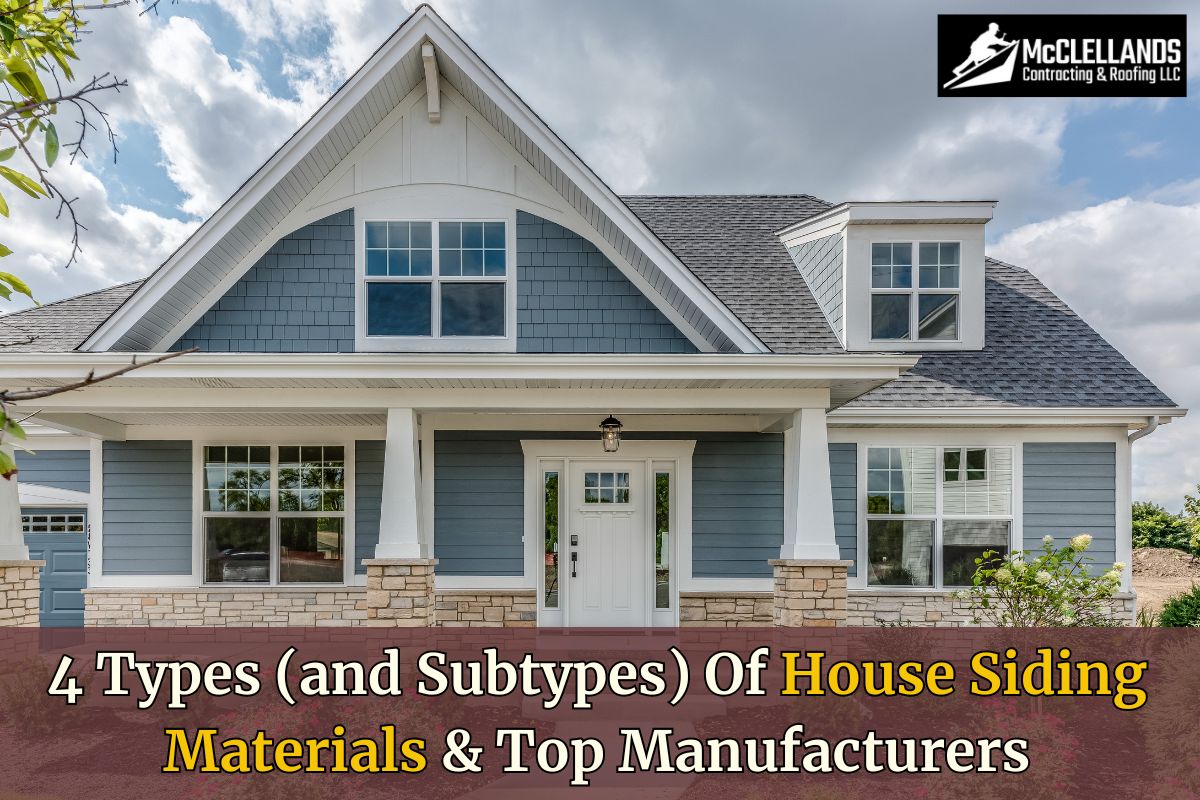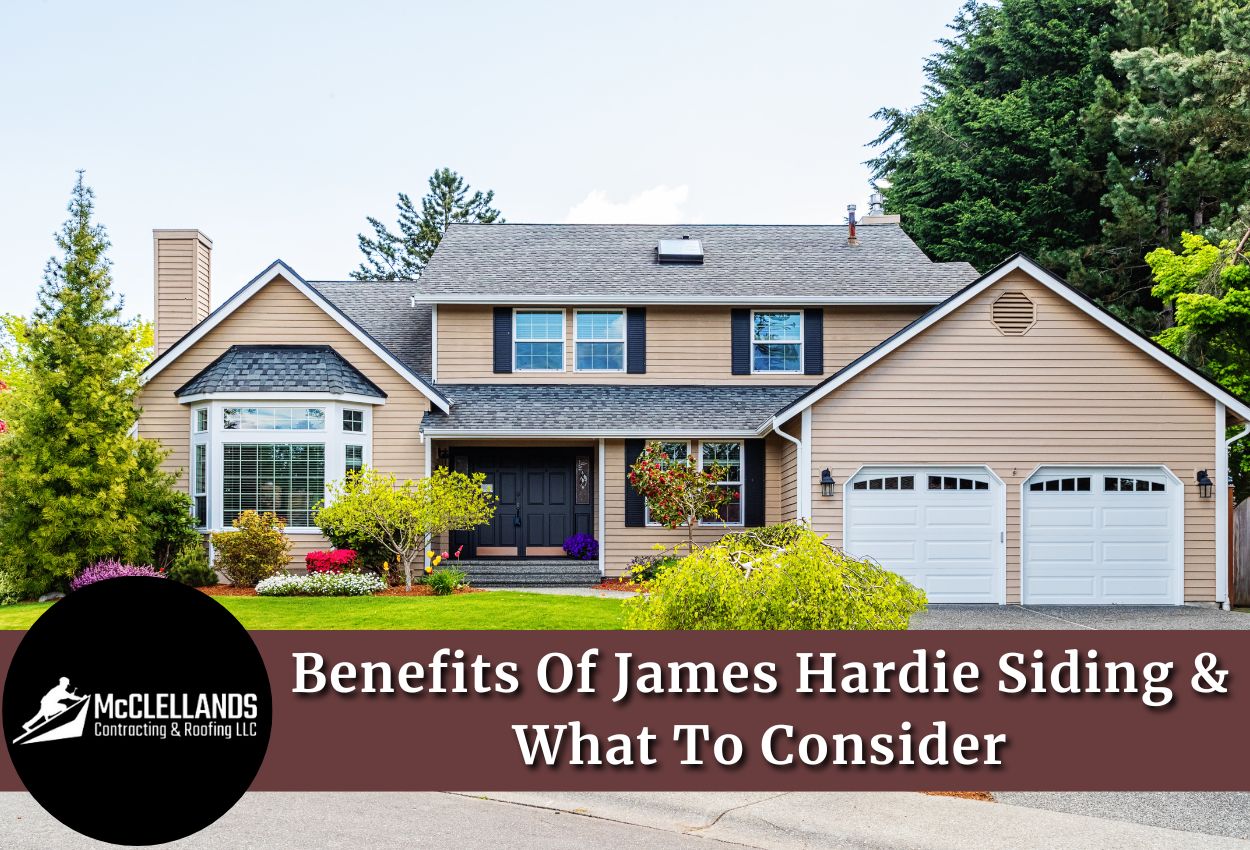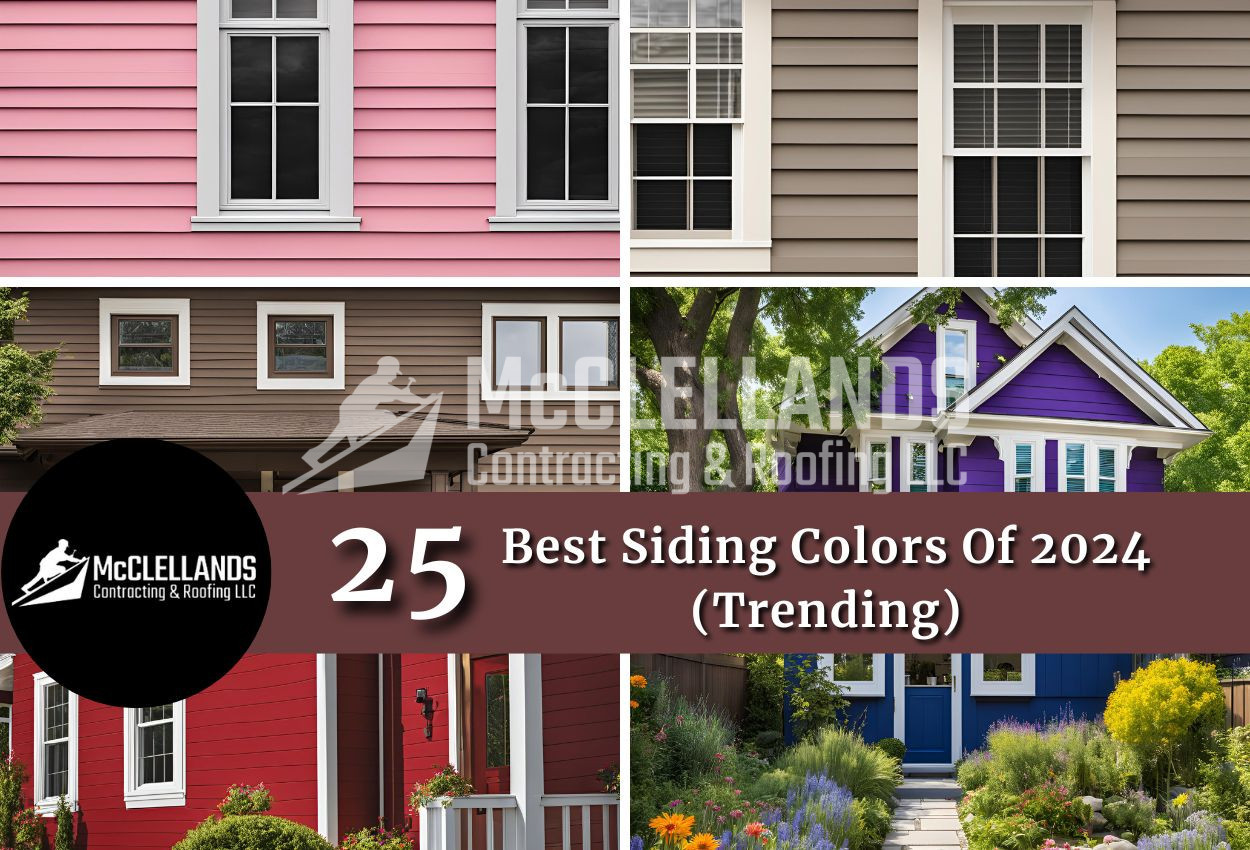Siding should be high on your list of design decisions if you are renovating your home or buying a new one. When you go through different siding options, choosing the right materials is as important as picking the right color and style. You should make sure that the material is suitable for your area’s climate and weather patterns.
Ready to learn more? Let's go over the top house siding materials, understanding their pros, cons, subtypes, and leading manufacturers.
Different Types Of Siding For Homes
You may know the basics of vinyl, fiberglass, and other siding materials, but it’s time to get into the details for a better comparison.
#1 Wood Siding

Pros: Wood siding is known for its timeless beauty and durability, giving a traditional and rustic feel to your home. It is one of the most popular eco-friendly choices, available in a wide array of natural colors and textures.
Cons: Wood siding requires regular painting, staining, or varnishing to protect it from the elements and insects. If not maintained, it can crack, warp, or rot, leading to water damage and insect infestations. Moreover, it can be more expensive than other siding options, such as vinyl and metal.
Fortunately, there are some types of wood, like cedar and redwood, that are not susceptible to rotting and insect infestation.
Types of Wood Siding
Here are the most popular types of wood used for siding on homes.
Cedar
Cedar is naturally immune to decay, rot, and insect damage, that’s why it is an excellent choice for exterior house siding. It has a pleasant smell that can act as a natural insect repellent and adds to its appeal. Cedar is known for its ability to resist warping and shrinking, making it suitable for applications where stability is important, including home siding and roof decking.
Pine
Pine is an easily available, inexpensive siding material compared to other types of wood. This makes it a popular choice for homeowners looking for a budget-friendly option. Pine wood can easily be stained or painted to match your exterior colors and architecture.
Fir
If you are looking for strength and stiffness, fir wood is a good choice. It typically has a straight grain pattern, which can look rustic. While not as naturally resistant as cedar or redwood, fir wood offers decent resistance to decay and rot when it is treated with preservatives.
Redwood
Redwood is prized for its rich, reddish-brown color and distinctive grain patterns, best for people needing a high-end house siding material. Redwood contains natural oils that make it highly resistant to decay, rot, and insect damage. Moreover, it is also chosen for its stability and resistance to warping, shrinking, and swelling.
Cypress
Cypress also contains highly resistant natural oils ideal for humid or wet environments.
This wood is extremely durable, lasting for decades or even centuries when properly maintained. Cypress has a unique look with a rich golden hue and distinctive grain patterns, perfect for adding a lavish feel to your home.
#2 Vinyl Siding
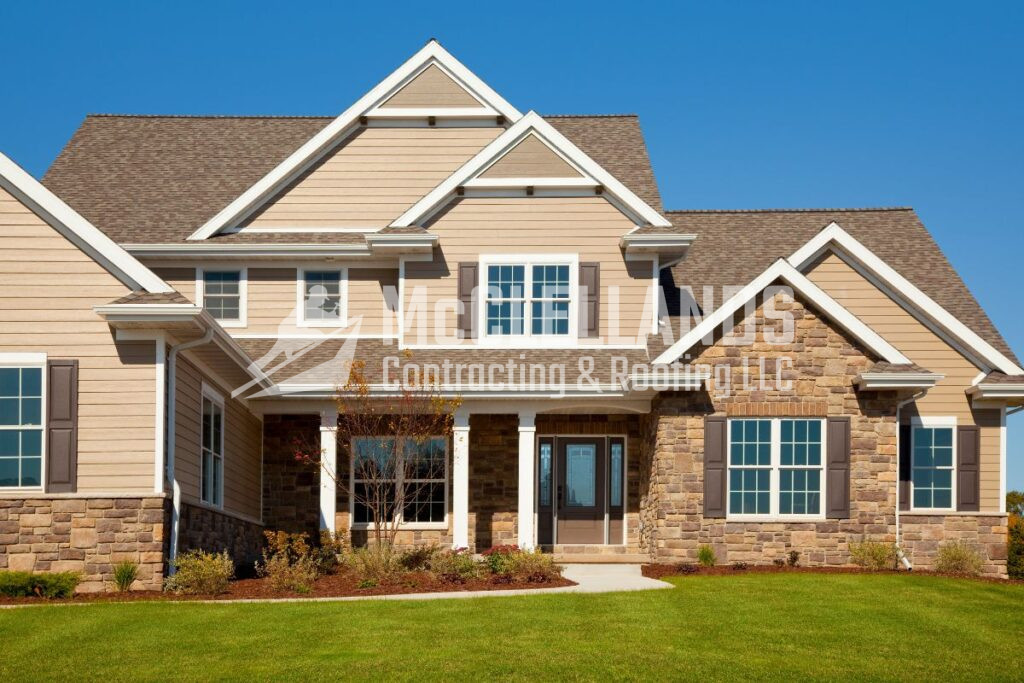
Pros: Vinyl siding is the least expensive option on the market, offering multiple benefits for homeowners on a budget. It requires minimal maintenance with good resistance to moisture, wind, extreme temperatures, and sunlight. Since the color is baked into the material, it also eliminates the need for repainting. With a vast spectrum of styles and colors, you can customize your home’s exterior with stylish and high-quality vinyl siding boards.
Cons: However, its plastic-like appearance may not enhance home value as much as wood, fiberglass, or metal siding. Also, vinyl is not typically regarded as a sustainable home siding option. But today, on the contrary, most vinyl siding products are recycled, and new production is on the decline. So, our vote goes to vinyl panels if staying within the budget is a top priority for you.
Vinyl Siding Options
There are plenty of popular styles and textures to choose from, and make sure the boards are thick enough to protect your home during fierce weather.
Styles
Vinyl siding has lots of style options, including clapboard, Dutch lap, smooth, board and batten, shake, and log style, among others.
Textures
Vinyl siding can copy the appearance of natural wood with textures ranging from smooth finishes to rough planks.
Thickness
Vinyl siding panels have different grades of thickness, including builder’s grade (0.40 mil), thin residential grade (0.42 mil), standard residential grade (0.44 mil), and premium grades (0.52 to 0.55 mil).
#3 Fiber Cement Siding

Fiber cement siding was invented by James Hardie in the 1980s. Today, a few leading manufacturers have also developed new versions of this material, but James Hardie patents the original formulation.
Pros: Fiber cement siding stands among the toughest materials in the house siding industry. It requires very little upkeep, as it does not rot, warp, or expand. Top manufacturers often provide solid warranties, providing over 30 years of protection when installed by a certified contractor.
Cons: The only concern related to fiber cement siding is the cost of installation, which is higher than vinyl siding. The siding can be brittle before installation and requires proper storage and handling to prevent damage. So, you will need to hire a brand-certified contractor to ensure manufacturer-specific installation and to enjoy the benefits of the warranty.
Fiber Cement Siding Options
Since it’s an exclusive formulation, there are a few limited options, and the best ones rest with James Hardie. You can explore an array of unique patterns and colors, including vertical, cedarmill, half-round shingles, planks, and more. Brands like GAF, Allura, and Nichiha also have some stunning options!
#4 Metal Siding
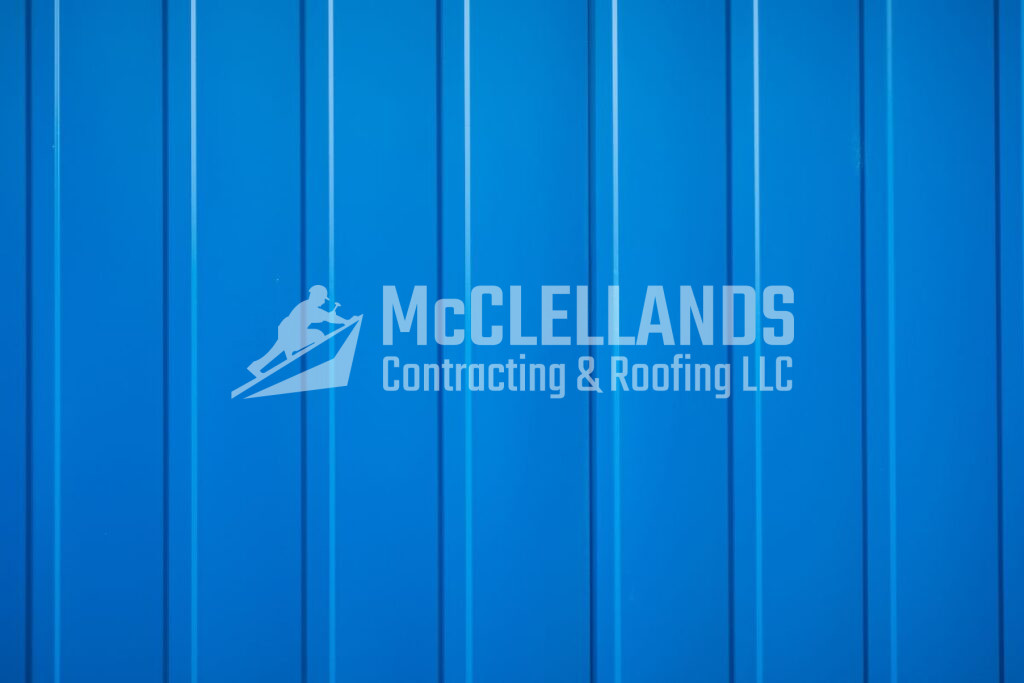
Pros: Metals are highly durable, capable of withstanding harsh weather conditions, and providing long-lasting protection for homes. With minimal maintenance requirements, metal siding does not rot, warp, or crack, reducing the need for regular upkeep. Additionally, metal siding is insect-resistant and non-combustible, providing superior protection against pests and fire hazards. Its energy-efficient properties help reflect heat, maintaining indoor temperatures and reducing energy consumption.
Metal siding also offers aesthetic versatility with various colors, styles, and profiles available, enhancing the visual appeal of any home. Furthermore, metals are recyclable, making it an environmentally friendly choice that can be reused rather than ending up in landfills.
Cons: Metal siding can have a higher upfront cost compared to other materials like vinyl, making it potentially more expensive to install. Hard impacts can cause dents in the metal panels, which can be challenging to repair for aesthetic reasons. Additionally, steel siding, in particular, may be susceptible to rusting after exposure to elements like salt spray or humidity in coastal areas. Finally, you will need to ensure proper insulation for soundproofing and energy-saving benefits.
Fortunately, galvanized steel and galvalume are the alternatives to steel for rust protection. The best way to prevent these complications is to hire an experienced and reputed siding contractor in your area.
Best Metal Siding Materials
The following are some of the most common metals used for house siding.
Copper:
Known for its aesthetic value, durability, and longevity, copper has been a popular building material for centuries.
Steel:
Durable and available in various profiles like corrugated, standing seam, and flat panels, steel siding offers strength and protection.
Aluminum:
Lightweight, low-maintenance, and resistant to corrosion, aluminum siding is a sensible selection for many homeowners.
Zinc:
Renowned for its durability and resistance to corrosion, zinc siding provides a long-lasting solution for exterior siding.
So, let’s explore the top manufacturers of these house siding materials.
Best House Siding Manufacturers In 2024
Here is a list of top house siding brands selected by industry experts:
James Hardie
As mentioned earlier, James Hardie is a household name that has established itself as a leading manufacturer of fiber cement siding products over several decades. The brand’s line-up includes well-engineered boards, panels, and shingles that withstand various climate conditions without sacrificing their aesthetic appeal or functionality. Notably, James Hardie created the proprietary Hardie® Zone system that specifies distinct product lines for different environments - which speaks of their adherence to high-quality manufacturing and customer satisfaction.
LP Building Solutions
Next on our list is LP Building Solutions, revered for its engineered wood siding range: LP® SmartSide®. Their materials are formed from natural wood combined with waxes and resins for added durability. The result is a tough and stylish material, not affected by decay or termites, while emulating traditional wood's visual charm. Moreover, LP doesn't solely rely on nature's resilience. The brand enhances its products through its SmartGuard® manufacturing process, ensuring long-lasting performance against challenging weather conditions.
CertainTeed
CertainTeed is a Saint-Gobain brand known for being a leader in premium vinyl siding options due to its diverse selection of styles, finishes, textures, and colors. What sets this manufacturer apart is their variety of colors and styles that allows homeowners to choose the perfect option for their home.
Kaycan
Kaycan is a pioneer in aluminum and vinyl-based siding. Looking at their fast-paced growth and popularity among homeowners, Saint-Gobain acquired this manufacturer in 2022. Kaycan is preferred for its extensive color selection and dual-layered coatings that resist fading and enhance product longevity and visual appeal. The innovative Helios™ technology they employ ensures thermal resistance and offers an impressive palette of UV-resistant colors for vinyl and engineered wood siding. Regarding unique styles like high-quality vinyl log siding, Kaycan’s range is worth considering.
So, now you have the top materials and manufacturers and can compare your options. Let us now understand what factors you need to consider when making a final choice.
Selecting The Right Type Of Siding Material
Choosing the right siding material can be time-consuming, given the countless options. By considering the following factors, it can make the selection process less hectic.
Cost and Budget
The cost of new siding is one of the first factors affecting your choice of siding material. It's essential to have a clear understanding of what you can afford before diving into your options. For example, while fiber cement is aesthetically pleasing and highly durable, it comes with high installation costs.
Your Aesthetic Needs and House Design
Your aesthetic and design preferences should also be among the top factors. As we’ve seen above, different materials and manufacturers offer unique patterns and features. Consider your home’s colors, architecture, along with the look and feel you want to create.
Maintenance and Durability
Some materials require regular upkeep to maintain their look, such as wood, which requires frequent staining or painting to prevent decay. Vinyl or fiber cement, on the other hand, offers durability and low maintenance at affordable prices.
Climate and Geography Constraints
Depending on where you live, certain materials may be better suited than others. Harsh winters or seasonal storms? Go for a sturdy home siding material like metal or fiber cement siding that can withstand extreme temperatures well.
Installation Requirements
The complexity of installation also influences the cost and time spent on the installation. Some materials may demand certified professionals, special equipment, and more time for correct installation.
Energy Efficiency
If you prioritize energy savings, insulation properties are crucial when exploring exterior siding materials. Some manufacturers offer insulated siding boards and separate materials and techniques to ensure proper insulation for moisture damage prevention and indoor temperature regulation.
Talk to reliable professionals, discuss your budget and all the other requirements to get the best type of siding for your home.
Get The Best House Siding For Your Home In Pittsburgh, PA!
At McClellands Contracting and Roofing, we are always excited to help homeowners build their dream homes. If you are buying or constructing a new house or want to replace your old siding, let’s talk. We offer James Hardie siding options, and we work with many more industry-leading manufacturers. Together, we can explore some exciting house siding options and pick the best one for your home. Contact us at (412) 353-5660 to book a free consultation on siding installation in Pittsburgh. Trust McClellands Contracting and Roofing to give your home a unique look using high-quality siding from a leading manufacturer!

